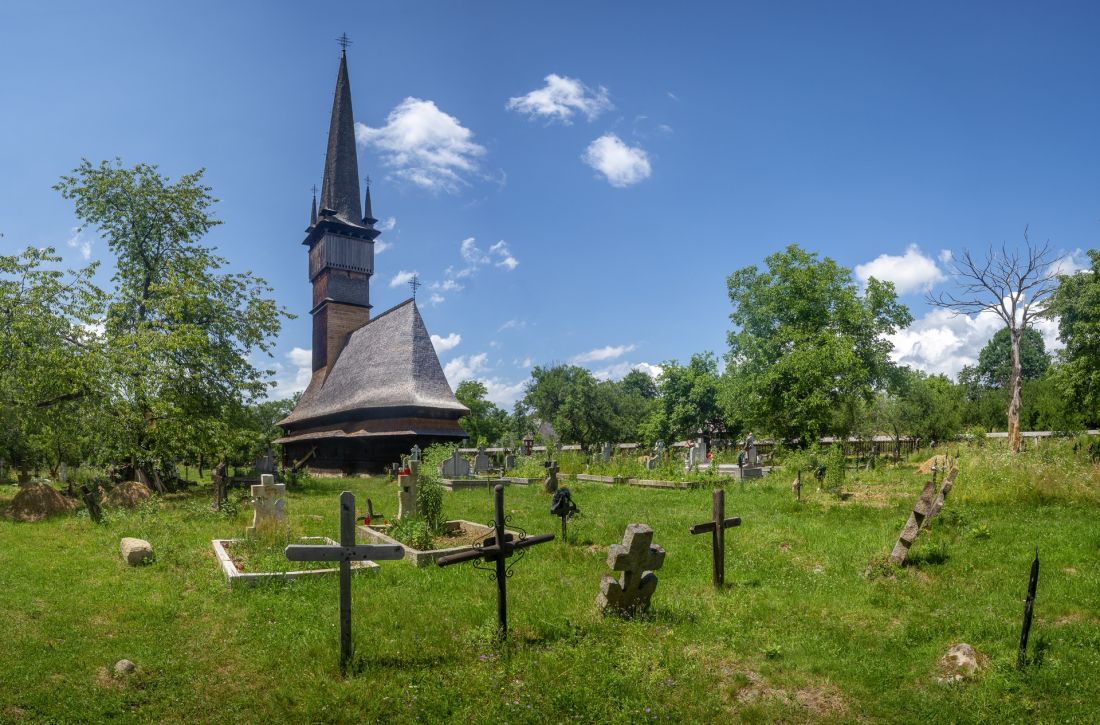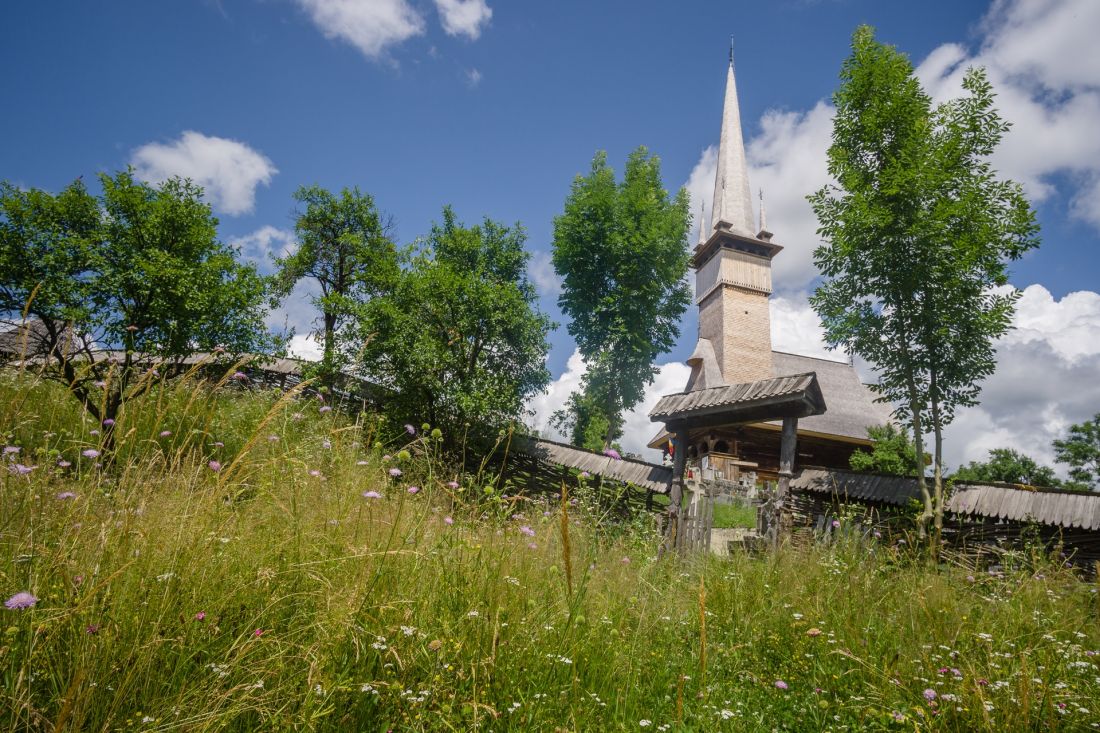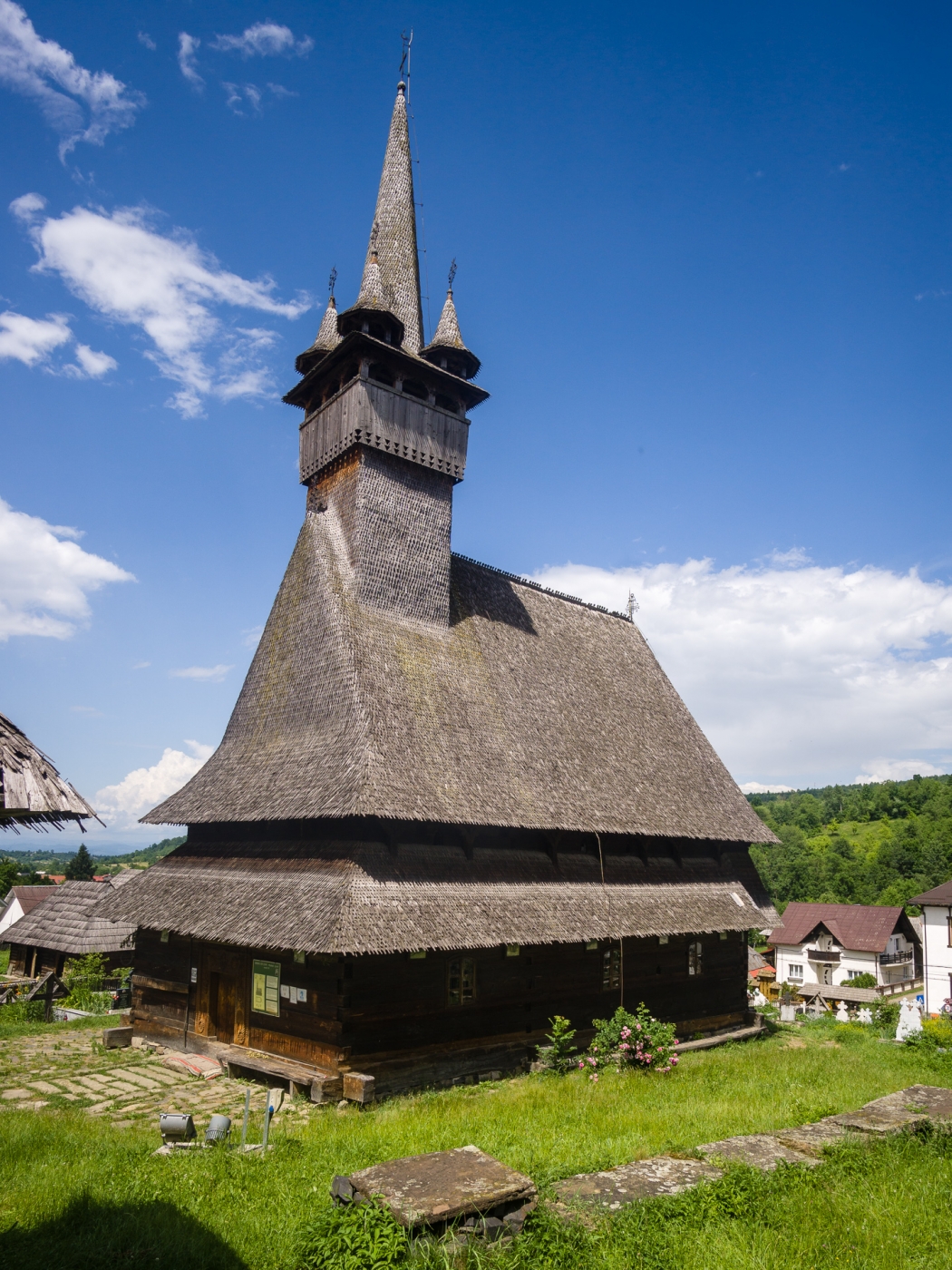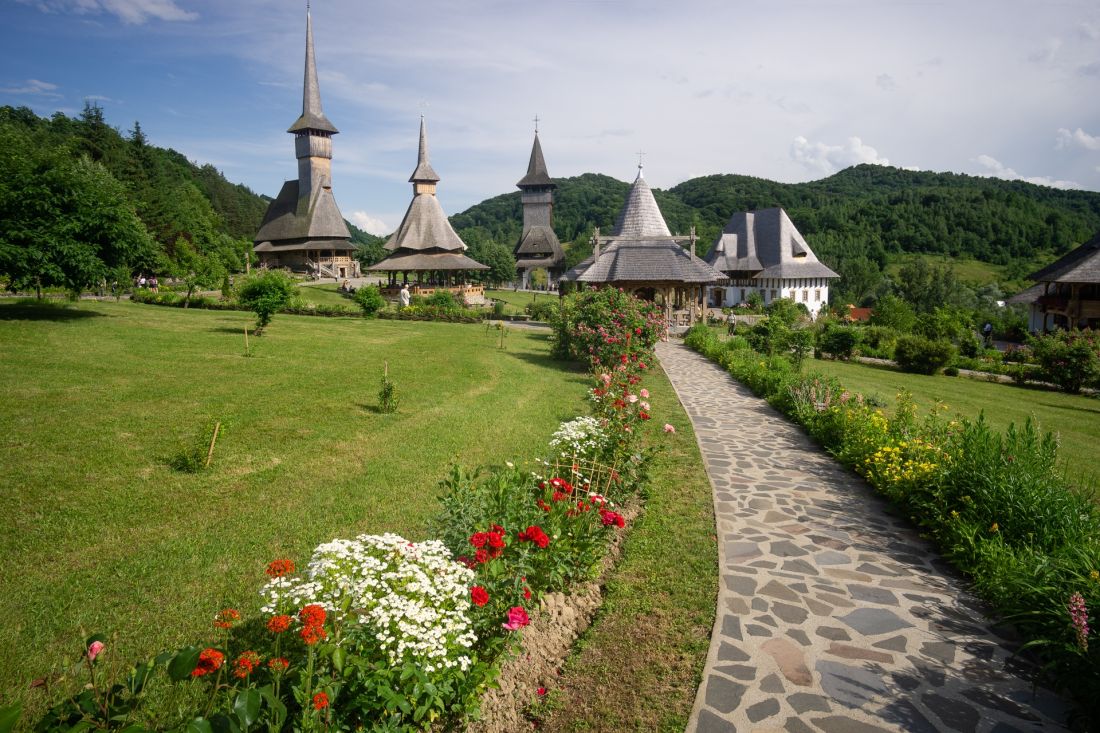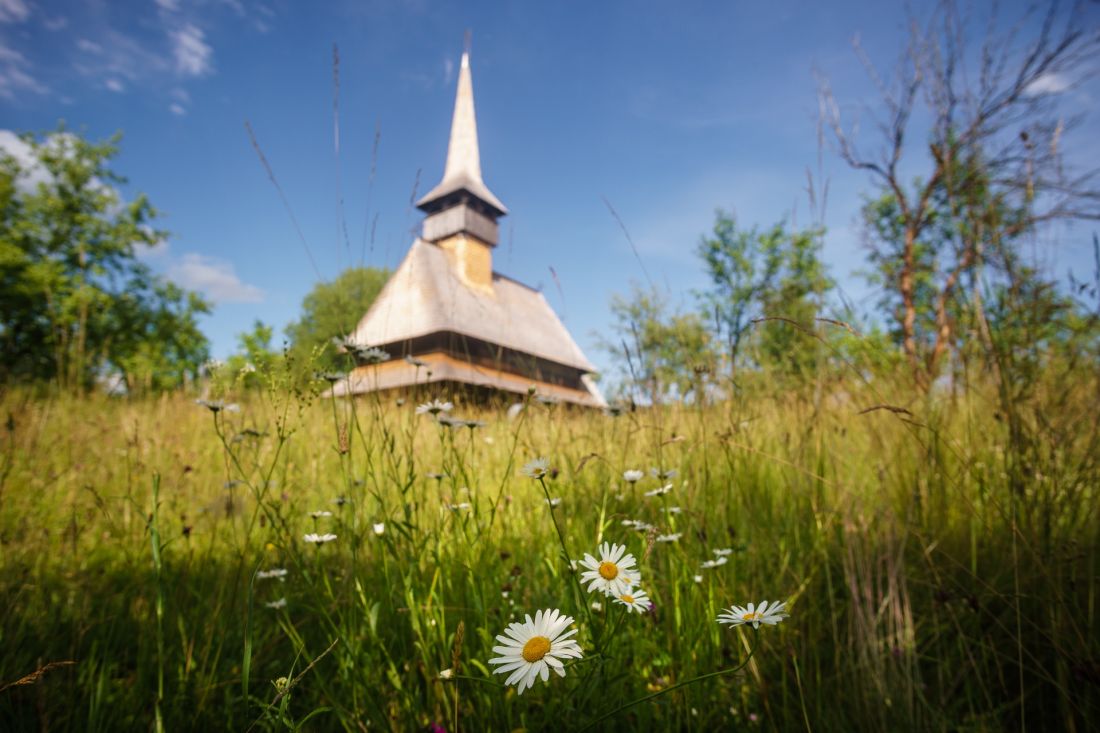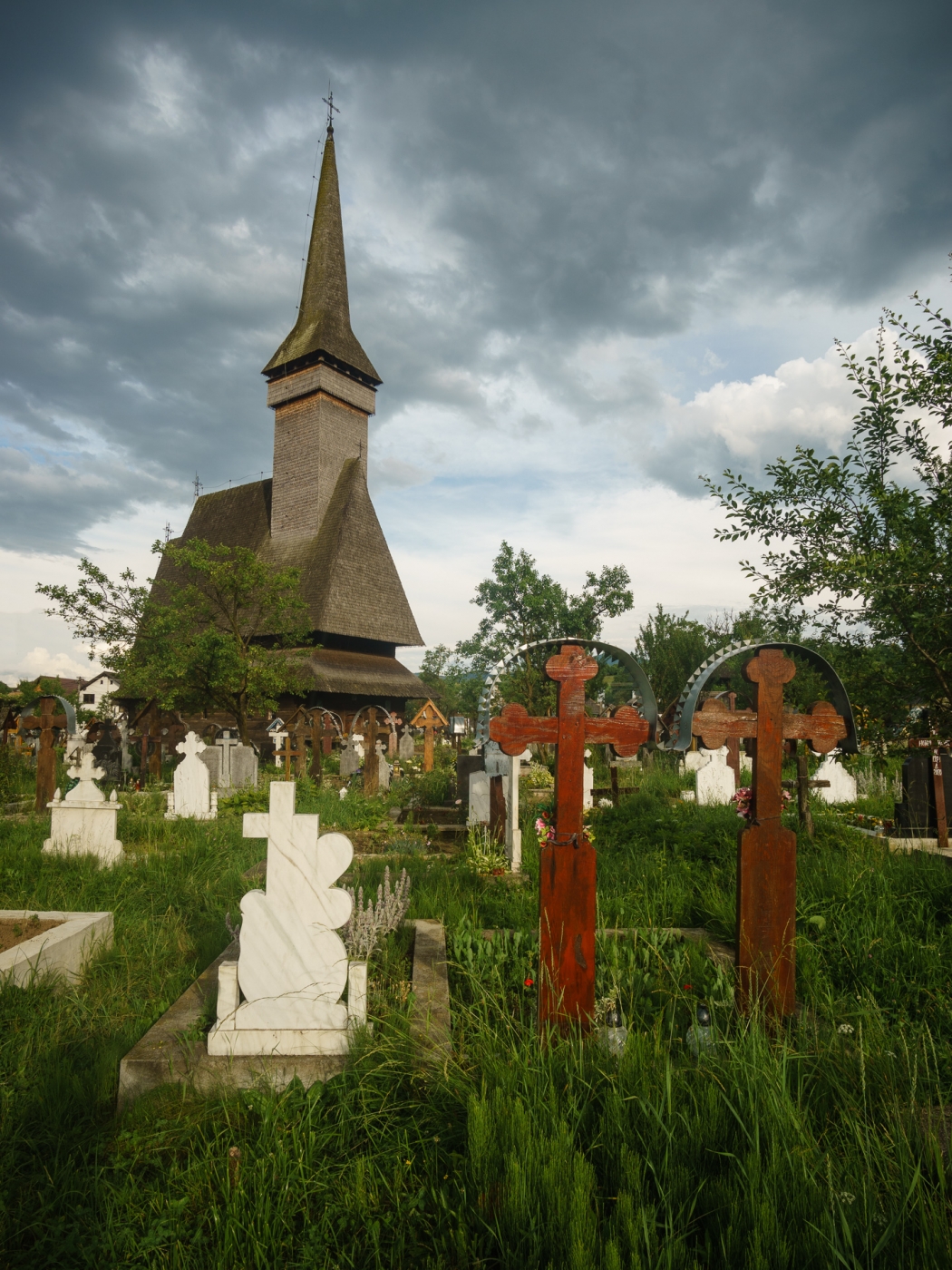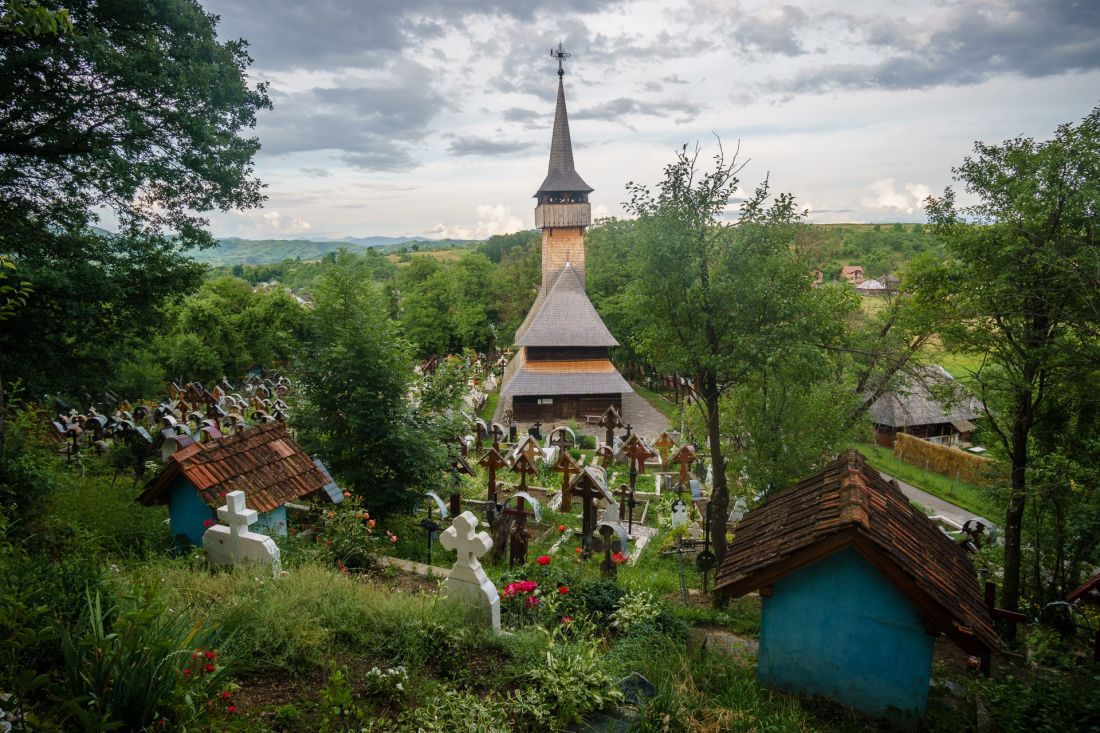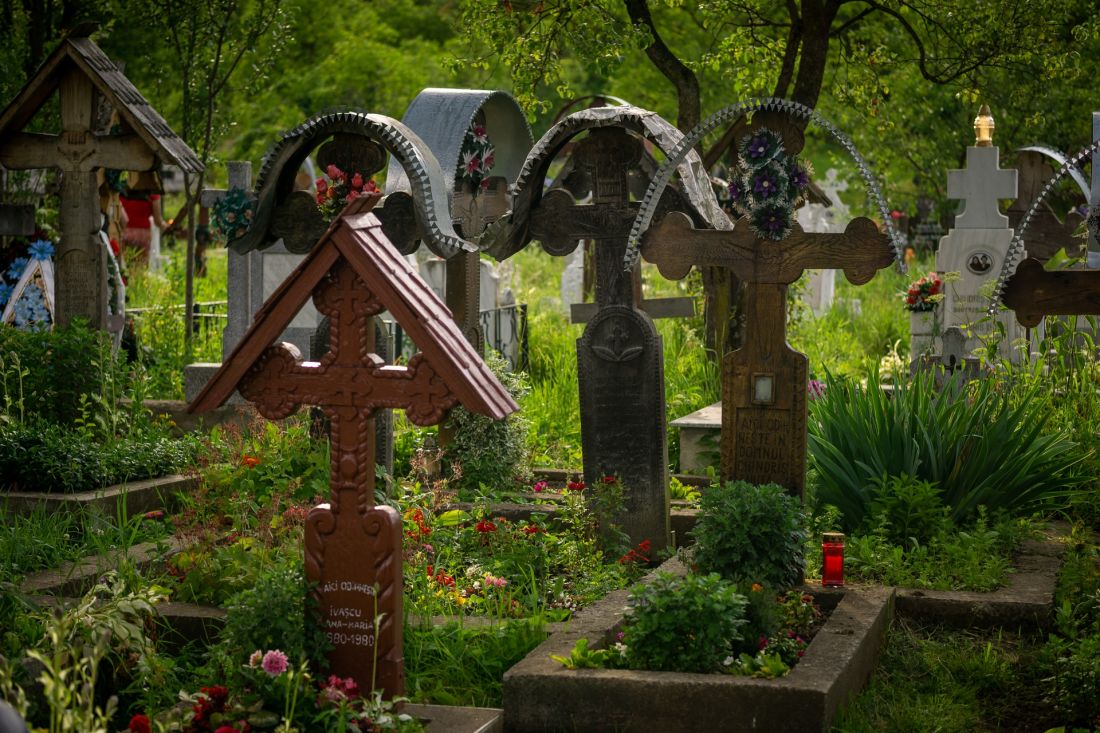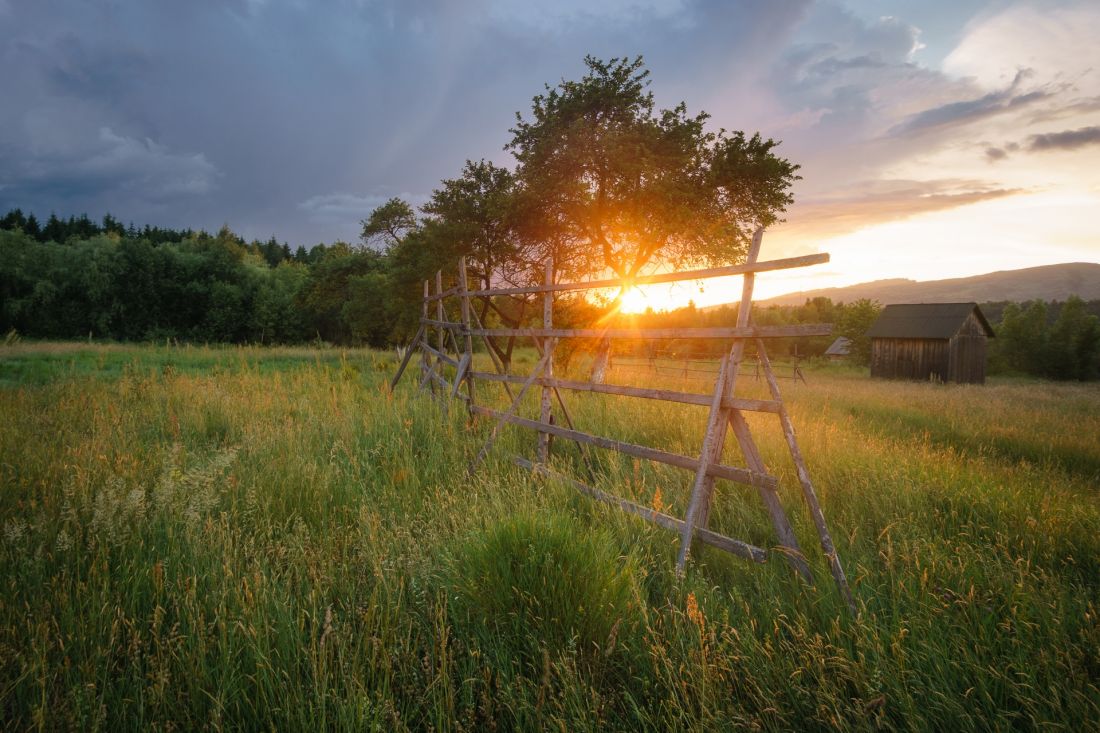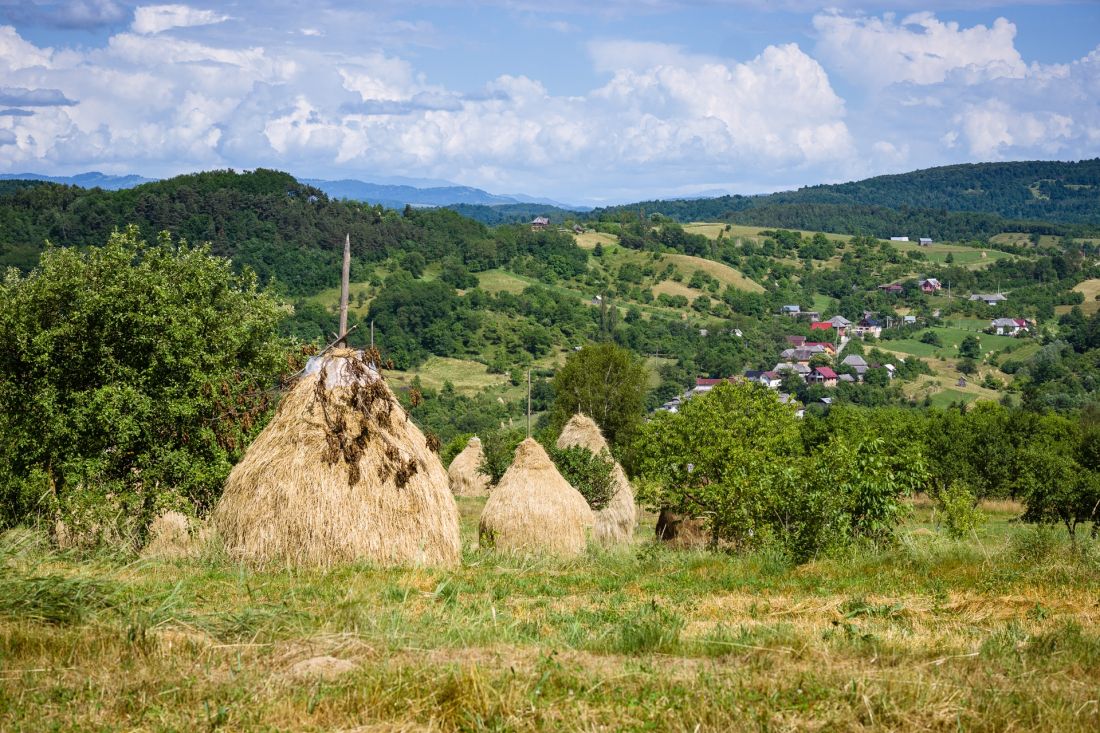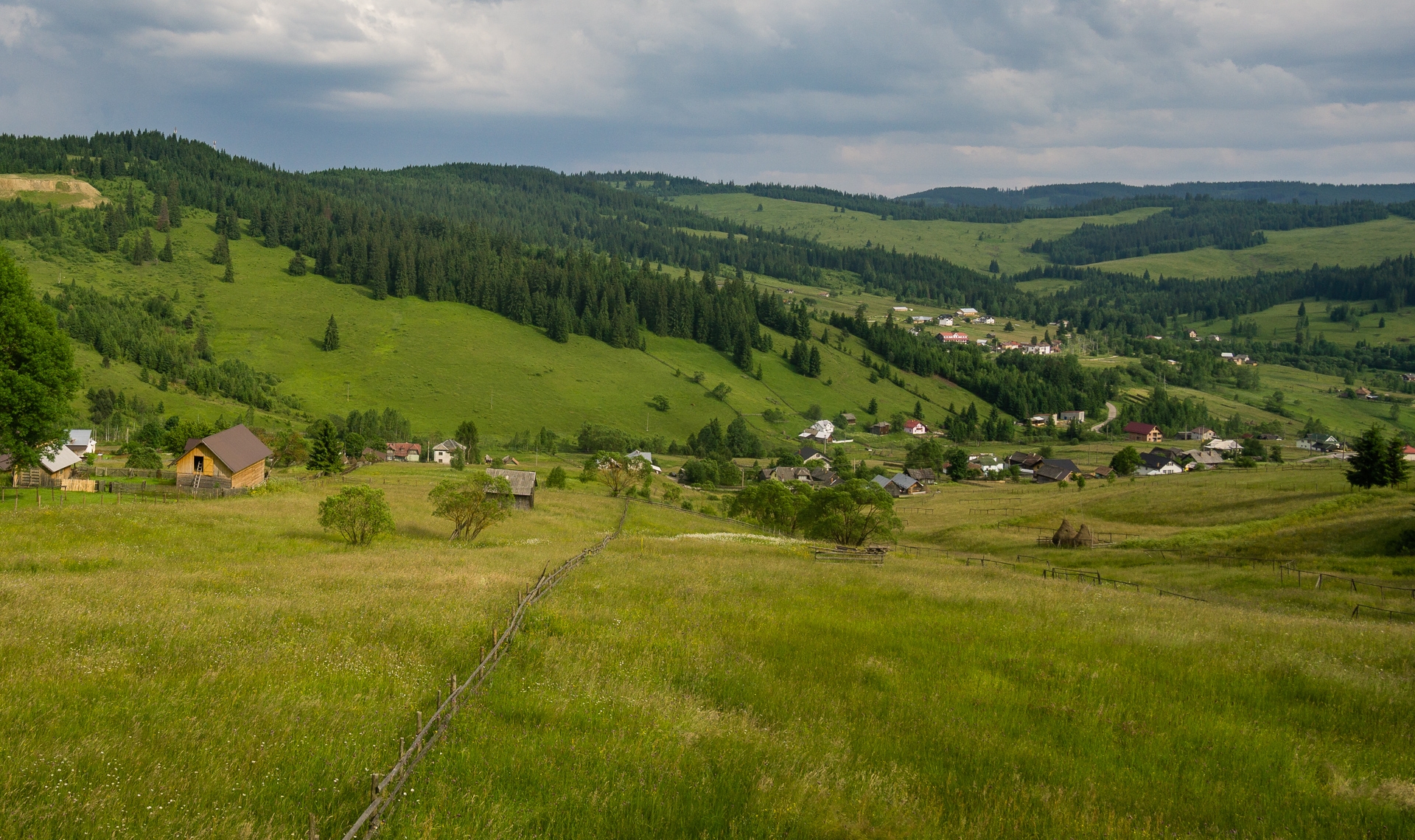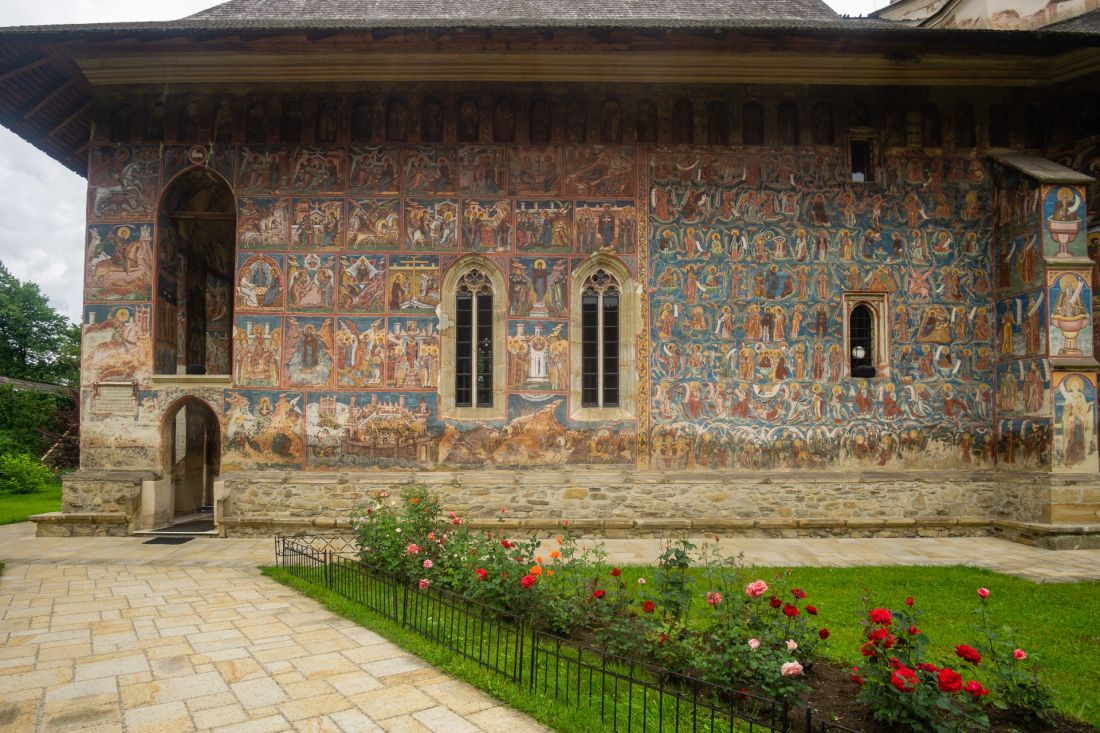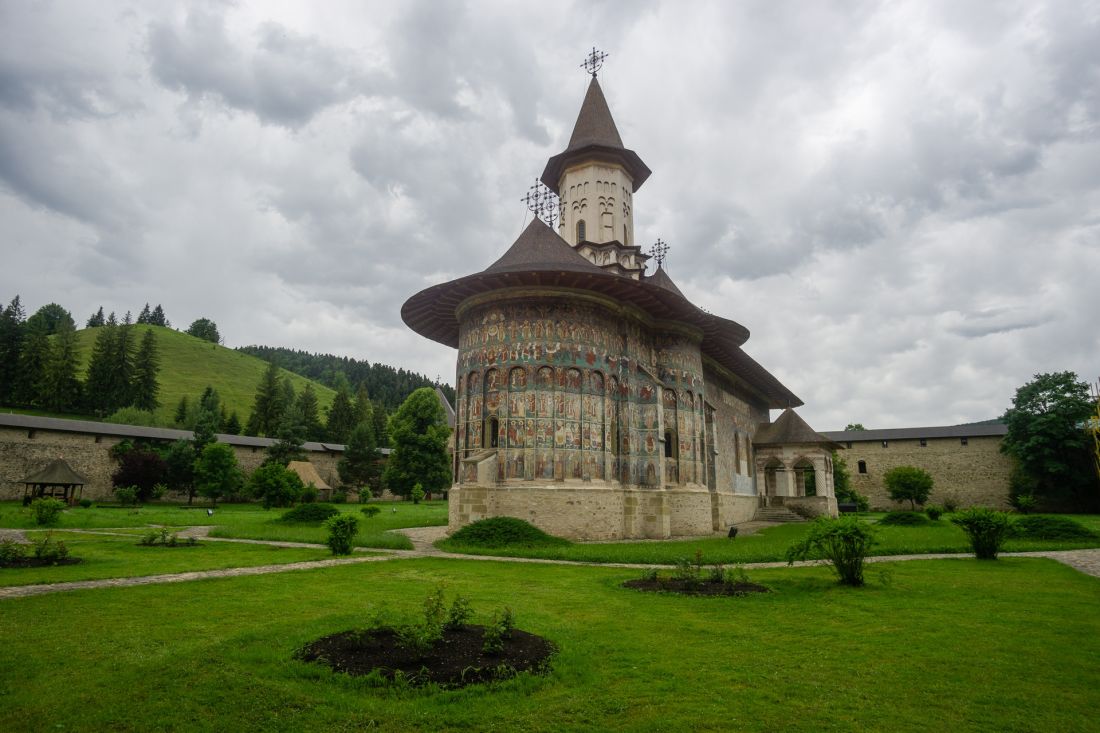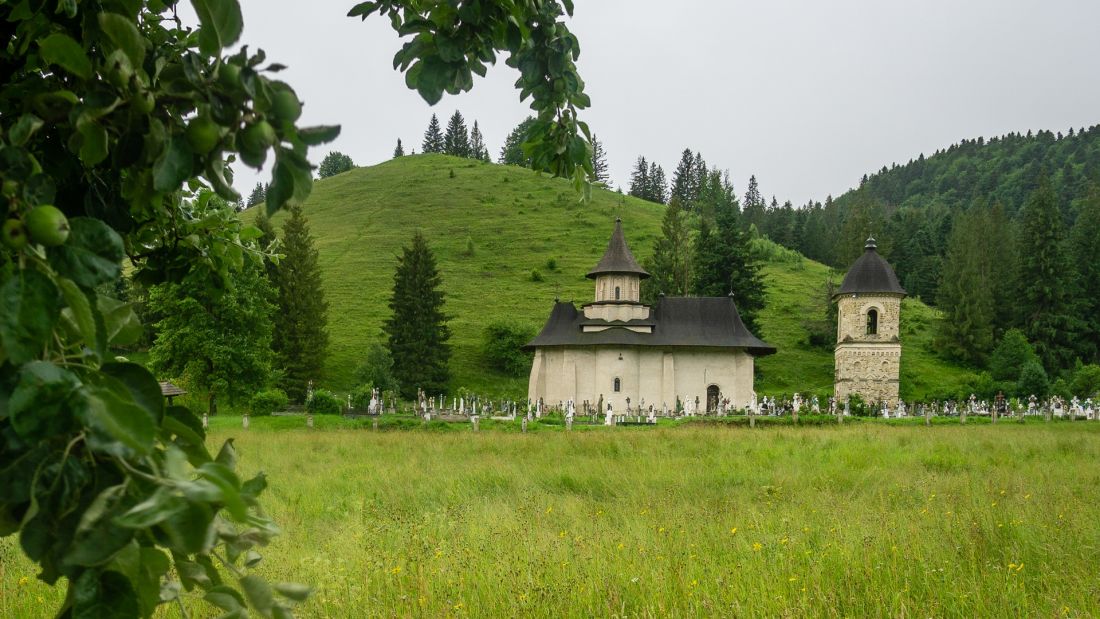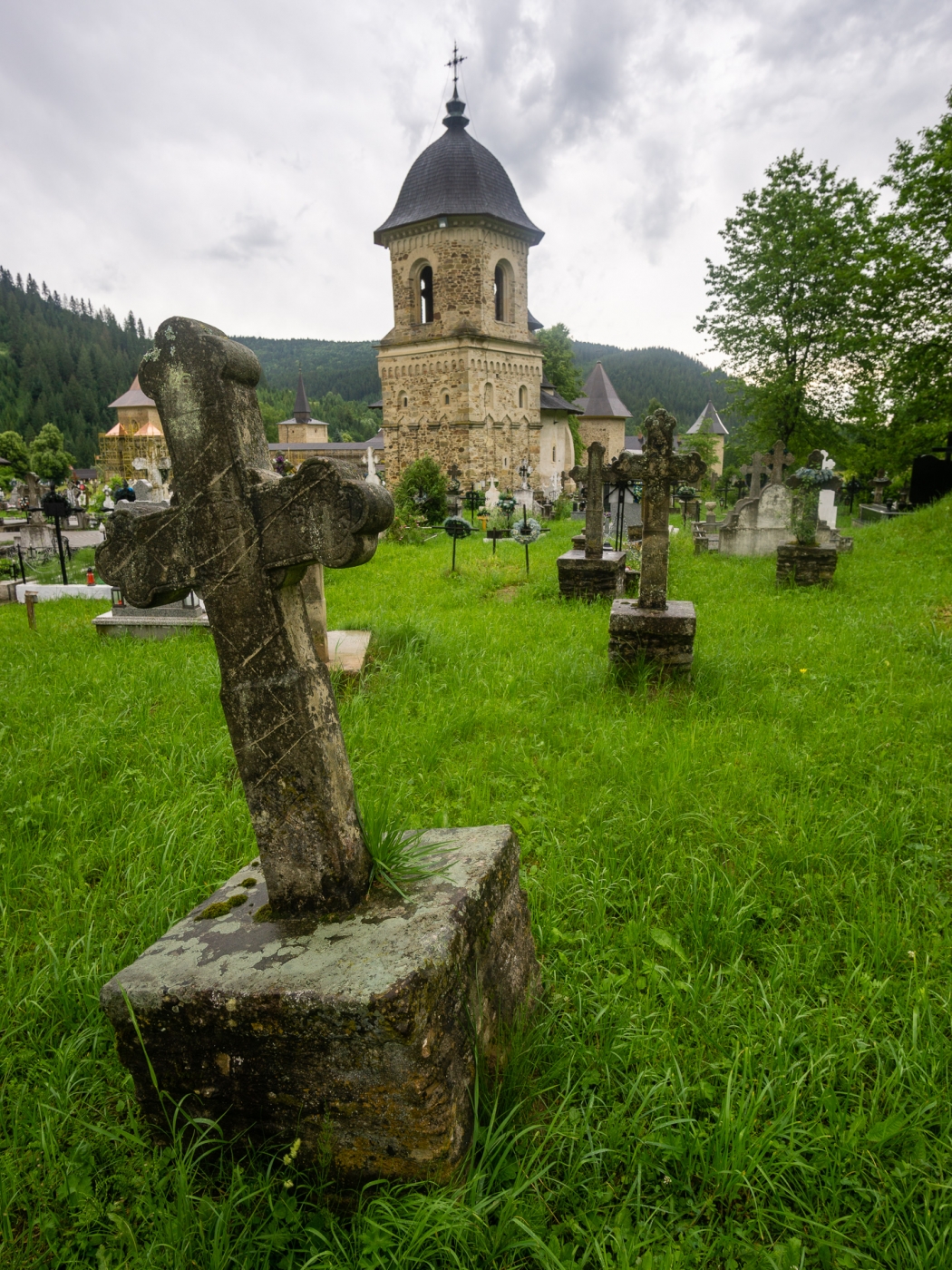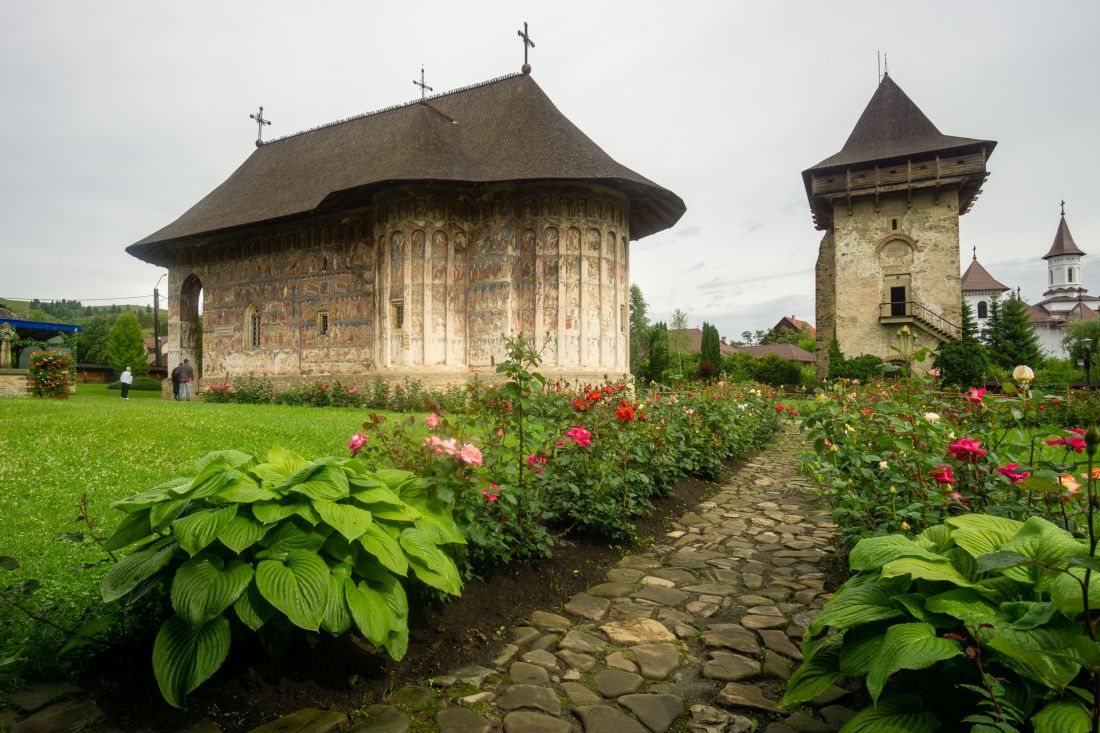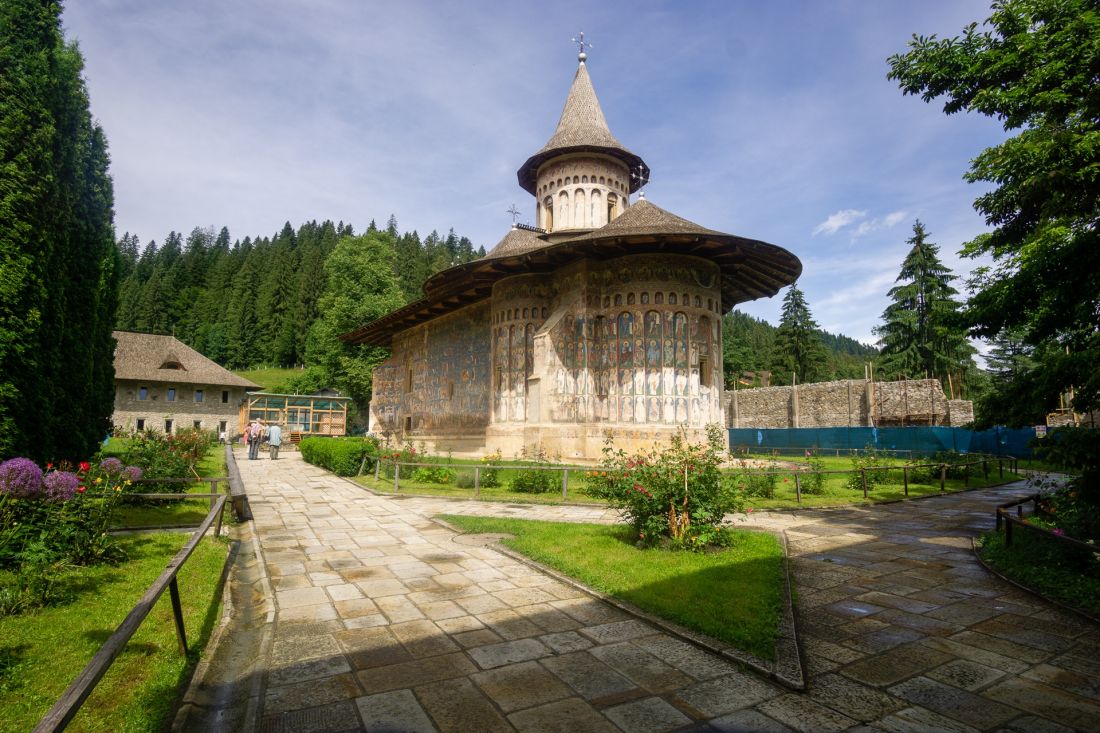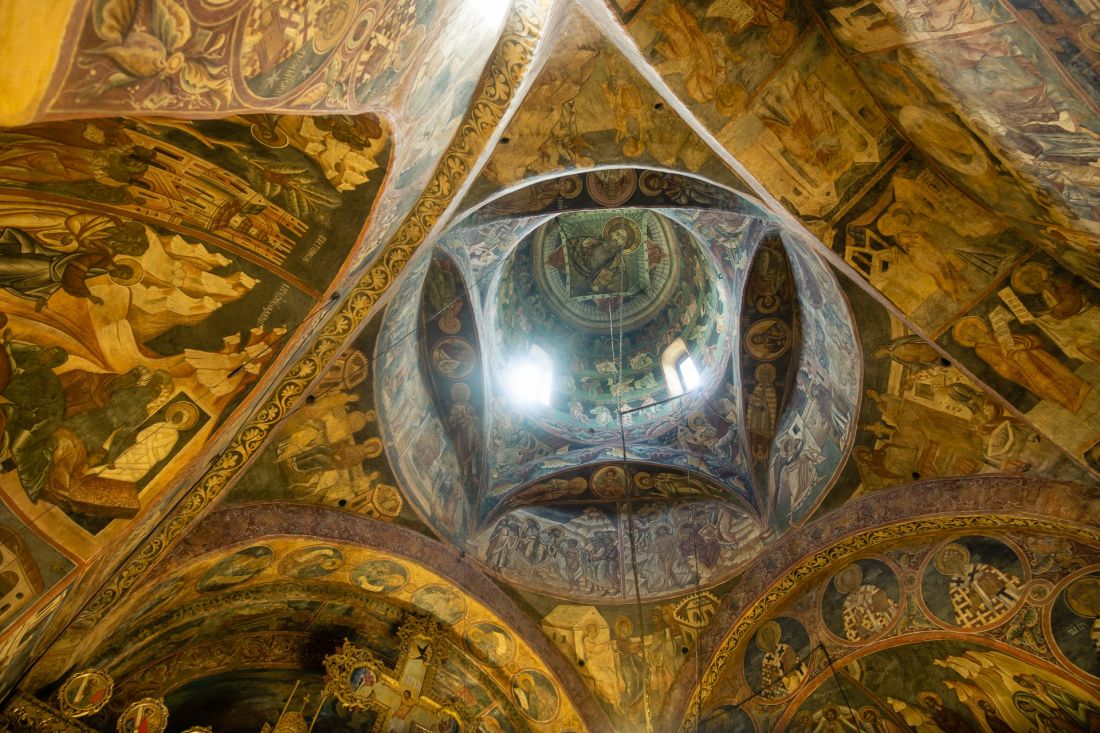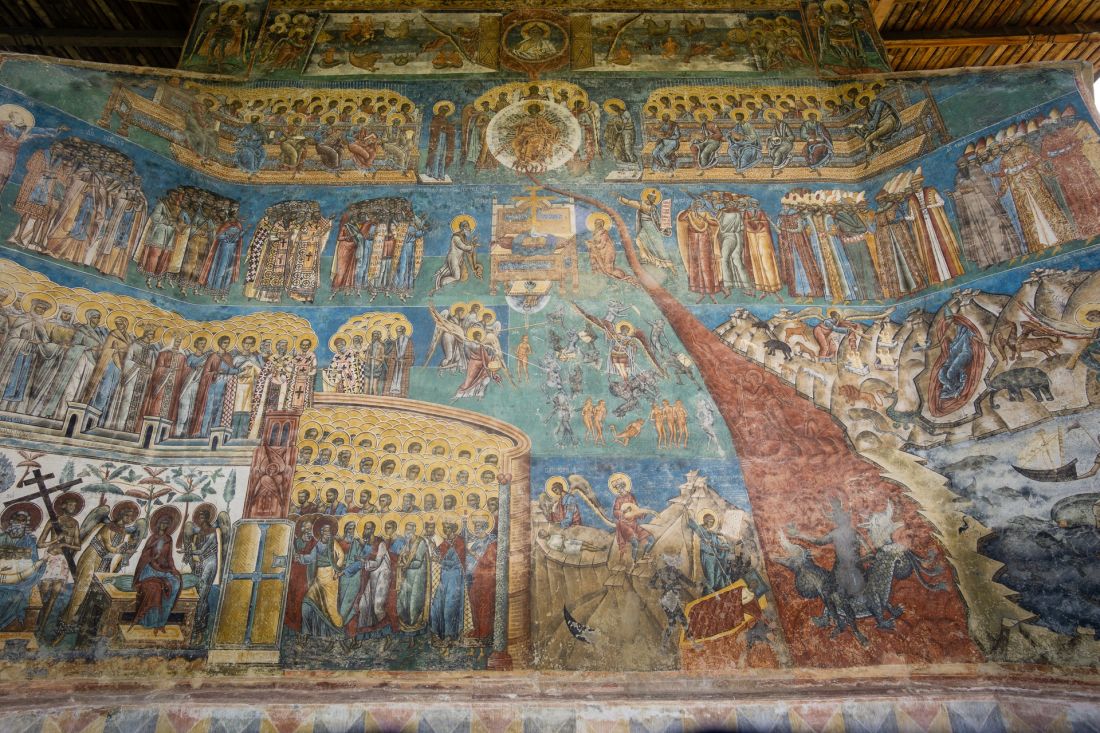A region where women still wear costumes and men wear hats, where meadows are decorated with characteristic haystacks and the slender spires of wooden churches tower over endless villages - this is Maramureš. An area in the very north of the country, near the border with Ukraine, where Romanians from the rest of the country come to see traditional rural life.
I start my journey in Baia Mare, the county capital. The old centre is neat and pretty, but it is perhaps too far detached from the real essence of Maramures. Just outside the town, however, the meadows are dotted with haystacks piled around wooden poles, the buildings are getting smaller and the spire of the church of Șurdești looms over the landscape, finally pleasantly undulating.
A narrow path between wooden fences leads up to the hill with the church. Interesting are the large wooden gates found at almost every local house. Each contains a smaller pedestrian gate and a larger gate for a carriage (or nowadays a car), is covered by a canopy and richly carved - most often with a sun motif. I like the fact that this element is retained in new buildings. It is not infrequent that a house is still under construction, but the wooden gate has been standing for a long time.
The church in Șurdești itself is the best possible example of local wooden architecture. For many centuries it was the tallest wooden church in the world, reaching a height of over 70 metres. A tall, slender tower rises above the entrance, in this case complemented by four smaller towers, while the rest of the building is simple. Inside, the church is richly decorated with paintings.
Very close is the church in neighbouring Plopiș, which is very similarly designed. I am intrigued by the local fences made of intertwined branches, a simple yet aesthetic solution.
I cross towards the valley of the river Iza and stop in Budești. The local church is located right next to the main road and it is already possible to observe the architectural differences. The tower is lower and the arcaded entrance is completely missing. I like the design of the roof, where the individual shingles end in protruding 'tails'. I walk through the village past crumbling wooden buildings that, like the church, remember several centuries, some with local grandmothers sitting in front of them, others with new German-made cars parked in front.
The church in Călinești is quite different. It is located up on the hill behind the village, on the edge of a meadow and a sparse grove. It is small and, together with its covered porch, is shaped like an L from above. When I return, my boots are full of grass; I don't mind.
I continue on to the larger settlement of Bârsana. Here there is a newly built wooden monastery. It's a nice place, well maintained, but lacking in history. There are also many visitors here; I prefer to flee to the old wooden church at the other end of the village. There is no one here for a change, even the cemetery is slowly overgrowing with meadow flowers and orchard.
Through Rozavlea (where there is of course also a wooden church, there are over a thousand of them in the whole area) I head to the village of Ieud, where there are two churches. One older, orthodox, called "On the Hill" and the younger Greek Catholic "In the Valley". The church on the hill is supposed to be the oldest in all of Maramures, but I like the one in the valley better, even though it has never been painted. It is probably the austerity and overall slenderness of the building. I am told that it is also nicknamed the "Wooden Cathedral" because of its proportions.
I leave Maramureš further east and wonder how long it can last in its traditional form. The roads here have long been of good quality, most people have traded horses for cars. The fields are deserted, only haystacks remain...
I cross the Mestecăniș Pass and enter the historical region of Bukovina, now divided between Romania and Ukraine. The landscape is changing again, with more and more wooden buildings with corrugated iron roofs, settlements crouching in darker valleys surrounded by spruce forests. Willows grow along the streams. It reminds me of Ukraine, even the local names often sound familiar. No wonder, it is here that most Slavic influences have penetrated to Romania. For example, the individual mountain ranges are called "občiny".
Early in the morning, in fog and rain, I arrive at the slowly awakening settlement of Vatra Moldoviței. Here is the first of the painted medieval monasteries that dot Bukovina. I enter the courtyard behind the defensive wall of the monastery and find myself hundreds of years in the past. One of the nuns walks around the church counterclockwise, beating a wooden mallet against the semantron to call the others to morning prayer. A special experience. I'm exploring the church, which is said to have the best-preserved paintings of them all. The open narthex with its massive painted columns is particularly interesting.
In the village of Sucevița, another monastery surprises me with its size. Massive walls arranged in a square with defensive towers in the corners surround one of the largest painted churches. I don't meet anyone in the monastery area. Perhaps it is because I am still here very early. But it gives the place a deeper dimension, enhanced by the dark clouds and rain. Away from the main area there is a cemetery and a smaller church with a separate (sloping) bell tower. Compared to the monastery, these are modest buildings, but I like them even more. I inspect the cemetery, the old stone crosses have inscriptions in Cyrillic, the newer ones are described with names like Procopciuc, Boidan, Dymitru, ... that doesn't really sound Romanian.
The monastery in Humor has a more compact impression than the previous two. This is probably due to the absence of a tower, otherwise it is a similar building. Here I already encounter a lot of visitors. I don't like it, the place loses some of its charm compared to the previous two.
The Voroneț Monastery is probably the most famous of them all. Probably because of the distinctive blue colour of the frescoes, or because of its western façade, which is completely without openings and covered with a fresco depicting the Last Judgement.





















